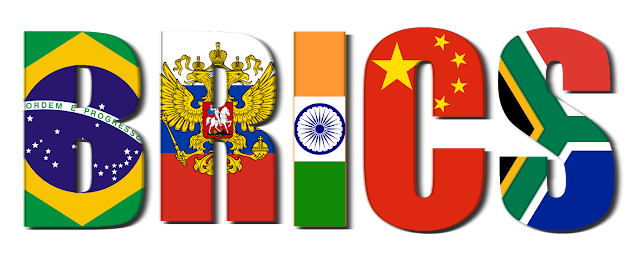In light of the slowdown in the US, EU and Japan, some 40-odd emerging markets led by BRICS is driving global economic growth today. The acronym BRIC, as originally coined by Jim O’Neil of Goldman Sachs 10 years ago was meant to identify fast growing economies which could offer attractive returns to foreign investors. But with the addition of South Africa in 2010, the ambition of this politically disparate group has grown manifold. My question is simple: what’s in it for India?
For starters, let’s look at the aspirations of this bloc and
its chief frontrunner—China. China is pushing the BRICS promise aggressively
and not without reason. Having outpaced Japan as the second-largest economy in
the world with a GDP of $5.9 trillion and the world’s largest foreign exchange
reserves of $3.3 trillion, China seeks to establish itself as a challenger to
US supremacy, have a greater say in the World Bank and the IMF and establish
renminbi as a reserve currency.
Jim O’Neil has fervently questioned the inclusion of South
Africa in this bloc. South Africa has a growth rate of just 2.5-3 per cent
compared to the average 6-10 per cent of China and India. Nigeria was a more
suitable candidate for this position, says Jim O’Neil or other emerging markets
like Indonesia, Mexico, South Korea and Turkey. But South Africa was invited in
this bloc at the insistence of China as it is a gateway to the African market
for Chinese manufactured products and its rich energy resources.
The fourth BRICS summit in Delhi recently has shown that the
world’s fastest growing economies can also cooperate on wide ranging issues.
For one, they want the emerging markets to have a greater say in the running of
the World Bank and the IMF. There is also talk about putting up a consensus
candidate from the emerging markets to head these two institutions for long
dominated by the US and EU.
Second, the BRICS summit in New Delhi also stressed the need
to set up a South-South development Bank on the lines of the World Bank to
finance infrastructure projects in emerging markets. Consensus was also reached
on intra-BRICS trade in local currencies to cut down on tariff costs. BRICS
also put up a common front with regards to the violence in Syria and its
opposition to the US-led sanctions against Iran for its nuclear programme. But
there were no political or strategic decisions.
Can there be? Russia is an authoritarian communist regime,
China is a single party communist state eschewing elections, while India,
Brasil and South Africa are thriving democracies. The BRICS promise is being
pushed aggressively by China because it wants to enlarge the scope of the
not-so-effective Shanghai Cooperation Organisation, its bid to establish
multi-polarity in the world and project itself as the sole challenger to US
supremacy.
Both US and India, the world’s oldest and the world’s
largest democracies are wary of China’s growing economic clout and its
secretive weaponisation programme. Both want to contain China which has
traditionally been an expansionist power. India would do well to stand solidly
behind the US initiative of concentric triangle comprising the US, Japan, India
and Australia to form a security counter bloc against China.
Should India play game with China? It could clearly be risky
and detrimental to India’s interests. India has a long standing border dispute
with China and a lost 1962 war, for long China has instigated Pakistan and
Bangladesh against India and has encouraged Maoist terror on Indian soil, and occupies
large parts of J&K. In this light, IBSA (India, Brazil, South Africa)
partnerships of thriving democracies should not be dismissed but India should work
harder on strengthening IBSA within the so-called BRICS bloc.














No comments:
Post a Comment